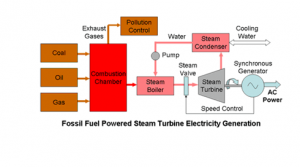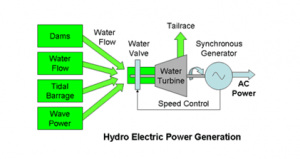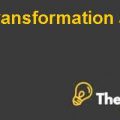Energy Map of UK by 2030 Case Study Solution
Introduction:
The UK has various sources for generating electricity.The UK believes that several resources should be used at the same time, to avoid or minimize the risk of eliminating any particular resource.
Fossil Fuel:
Most of Worlds electricity is generated by burning fossil(natural) energies. In 2015,the UK generated electricity from natural gas (30%), coal (22%) and oil (1%). The ratio changes year to year, depending on market prices. (Electricity generation, n.d.)
Nuclear Energy:
Nuclear energy was popular in recent history throughout the world. But, the cost incurred is more difficult to cover in current market situations.Therefore,the UK has decided to evolve its nuclear plant to renewable energy (natural resources) gradually. In 2015, 21% of UK electricity was produced through the Nuclear reactor, but this division is expected to shut down and replaced by Renewable energies,by the end of 2025.(Mann, 2016)
Hydroelectricity Power:
One of the most ancient sources of electricity is water. The UK has been using hydroelectricity for almost a century and is expecting to grow in future. By 2025 one third of these plants will be retired.However, there is a significant potential, for further development in this sector. The UK is committed to achieving a target ratio of 15% by 2020, through renewable energies. (Hydro in the UK, n.d.)
Electricity Generation in the UK:
Generation of Electricity through Fossil Energy:
Steam Turbine generators are used to burn fossil fuels, for producing electricity. Coal, Oil or Gas are the three fossil fuels, of which coal is the most useable resource consist of 60% fossil fuels.
Drax Power Plant in the UK burn about 13 million tons of coal, and has a capacity of providing 4000 MW. It includes 6 generators with each generating 660MV, contributing to 7% demanded electricity in the UK.
Fossil fuels are processed through thermal, mechanical and electrical procedures. They have an efficiency of 40%, means that 60% of the total input wasted. The procedure cost 2.21 cent to produce 1KV from coal.
Like every artificial procedure. Combustion has its negative effects on the environment. Combustion from coal results in releasing Oxides of Nitrogen and Sulphur Dioxide into the environment, causing air pollution. Another Side effect of burning fossil fuel is that, it damages precious greenhouse gasses including Carbon-Dioxide and Methane.Leading to their contribution towards global warming. (/www.mpoweruk.com, n.d.)
Hydro-Electric Power
Hydro-Electric power is generated through flowing water. A total of 17.5% of today’s worldwide electricity, is produced through hydro-electric power plants. It is not the most favorite method for generating electricity (due to lack of suitable sites), but is efficient in terms of readiness.
Hydro-electricity is produced through Kinetic energy, by flowing water through a turbine. This energy is produced by flow in rivers, movement in waves, tidal barrages, dams and waterfalls. Water Turbines of several types are used for generating electricity. The generator is attached to a turbine shaft, the movement of blades turn the turbine shaft. Which allows the generator to process electricity. Hydroelectric generation is by far the most efficient process, which includes no heating, no wasting and no releasing harmful gasses. Therefore, a hydro plant can effectively use between 80 to 95 percent% of kinetic energy for electricity production.But to do so, high speed of water flow is required.
As mentioned above, hydro-electric plants vary in size and types.Depending on the site, need and flow of fluid (water). The different turbines are Impulse turbine/Pelton turbine (for high heads and low flow), Reaction turbines – Francis turbine (for lower heads).
Dams are a useful source of the hydro-electric turbine.In this method, the flow of water is easily controlled. The water flow of 1 cubic meter with a height of 1 meter, can produce about 10kv of electricity through this technology.
Energy Map of UK by 2030 Harvard Case Solution & Analysis
Water in rivers is also a useful source of hydro-electricity. Although a fast water current, with a high velocity of water, can maximum generate under 10 MW of water.But, this is promising considering that the head is zero in this case.
France was the first to generate hydro-electricity from kinetic energy through Tidal waves. It is generated by placing bi-directional turbines in the path of tides, but tide needs to be strong for efficient energy production. Energy from the movement in theocean although limited, but is useful for electricity production as well. (Hydroelectric Power, n.d.)
Nuclear Energy:
Another efficient way of producing electricity is through nuclear energy. Currently, around 17% of the world wide electricity is produced through nuclear energy plants. Nuclear plants use pellets as the fuel for generation procedure. Most of the nuclear reactor is submerged under water, to keep the temperature under control. Nuclear energy is one of the cheapest, but dangerous energies that exist. Therefore,companies are trying to switch this procedure, in foreseeable future with thermal reactors. Thermal reactors are safer and cost effective. They are capable of producing hydrogen in the process (Ulmer-Scholle, n.d.).........................
This is just a sample partial work. Please place the order on the website to get your own originally done case solution.












